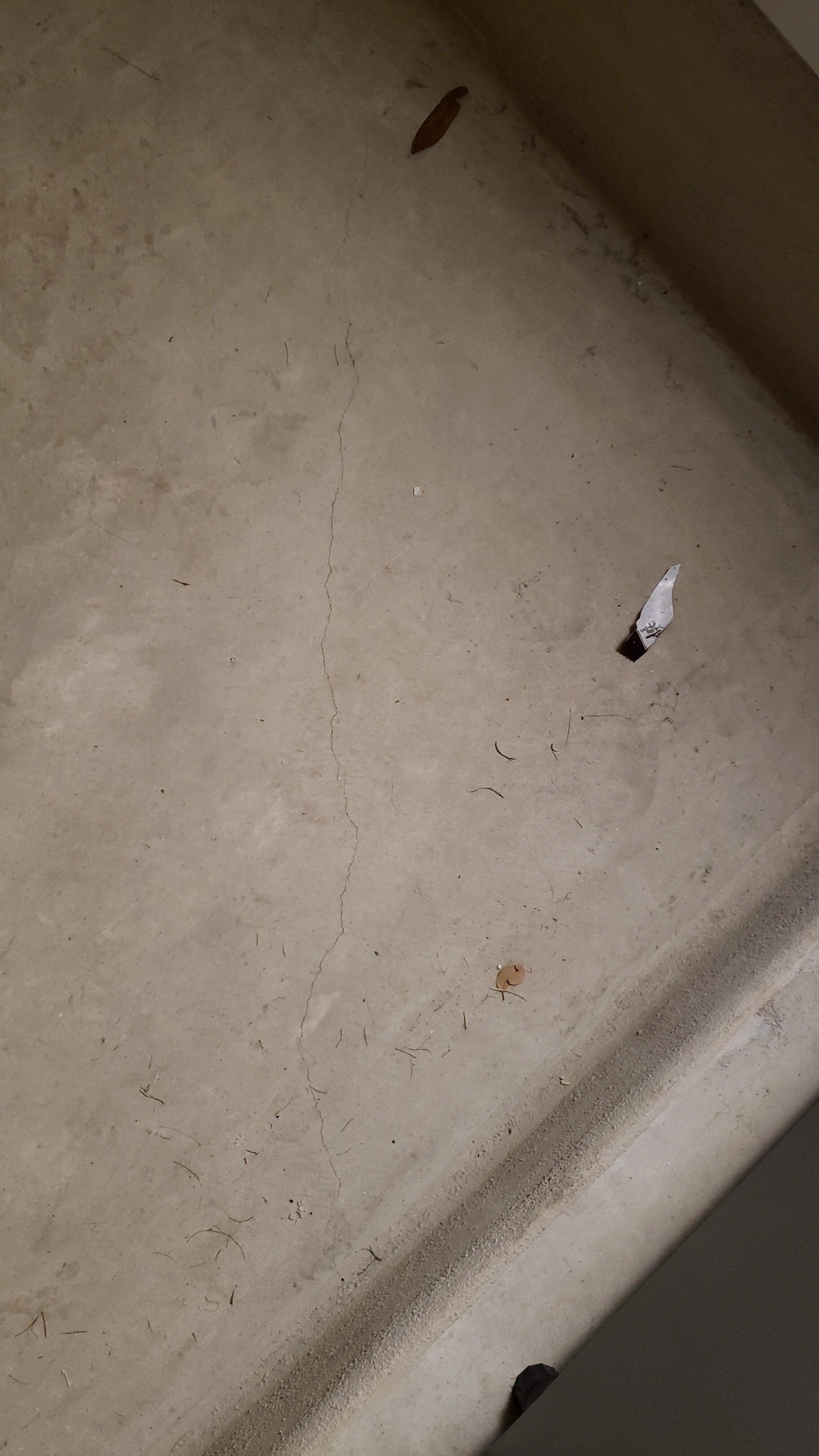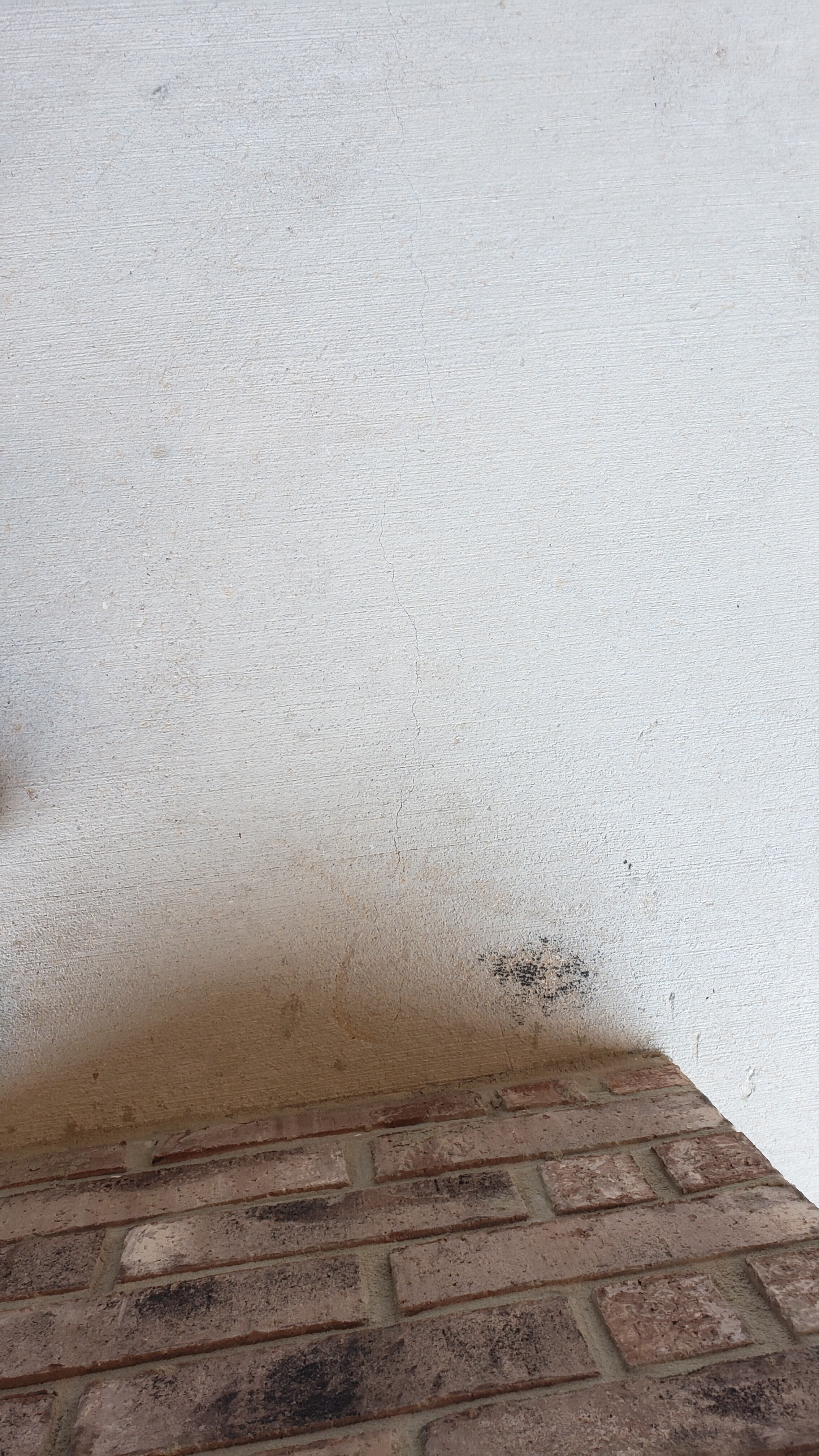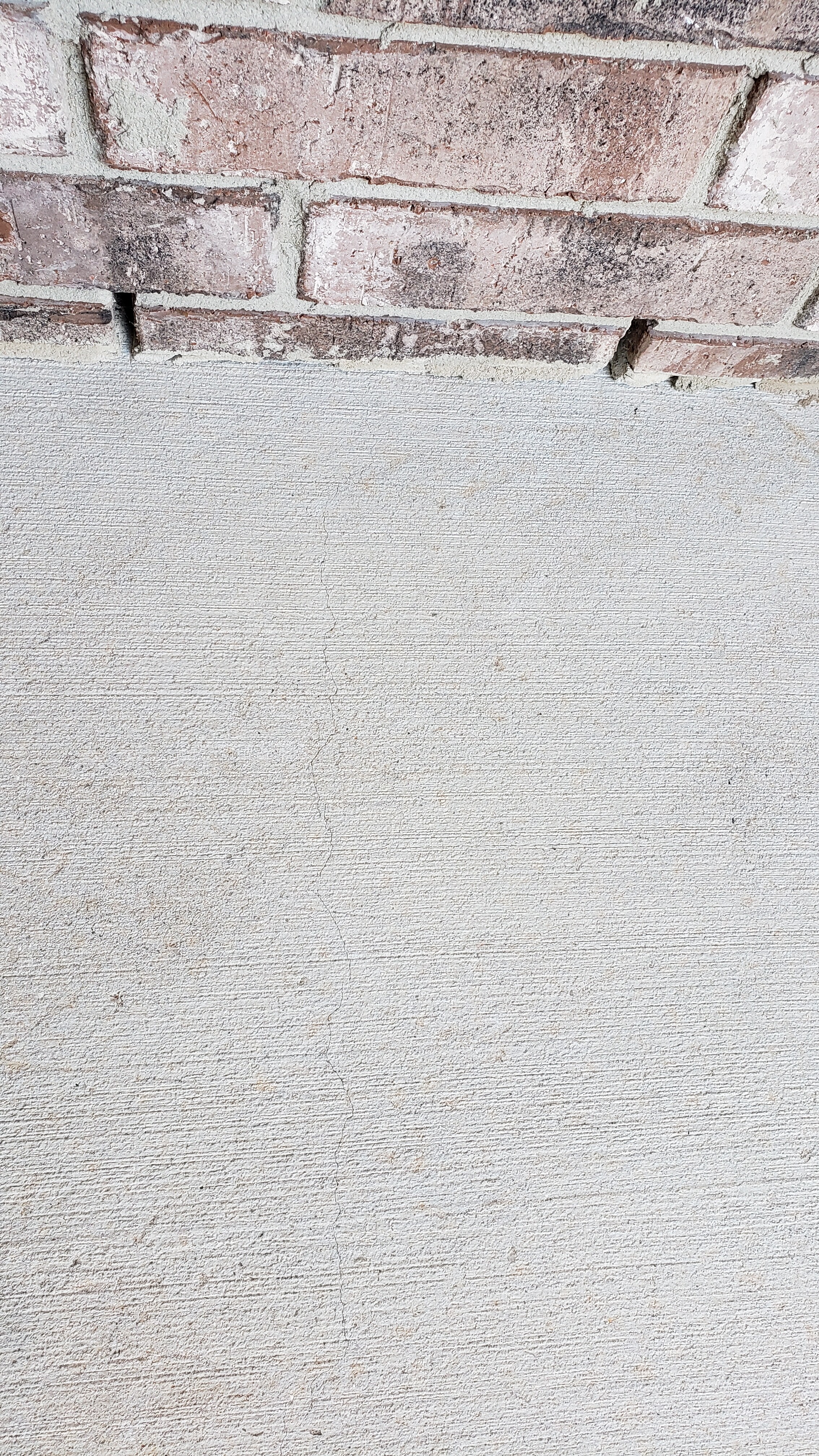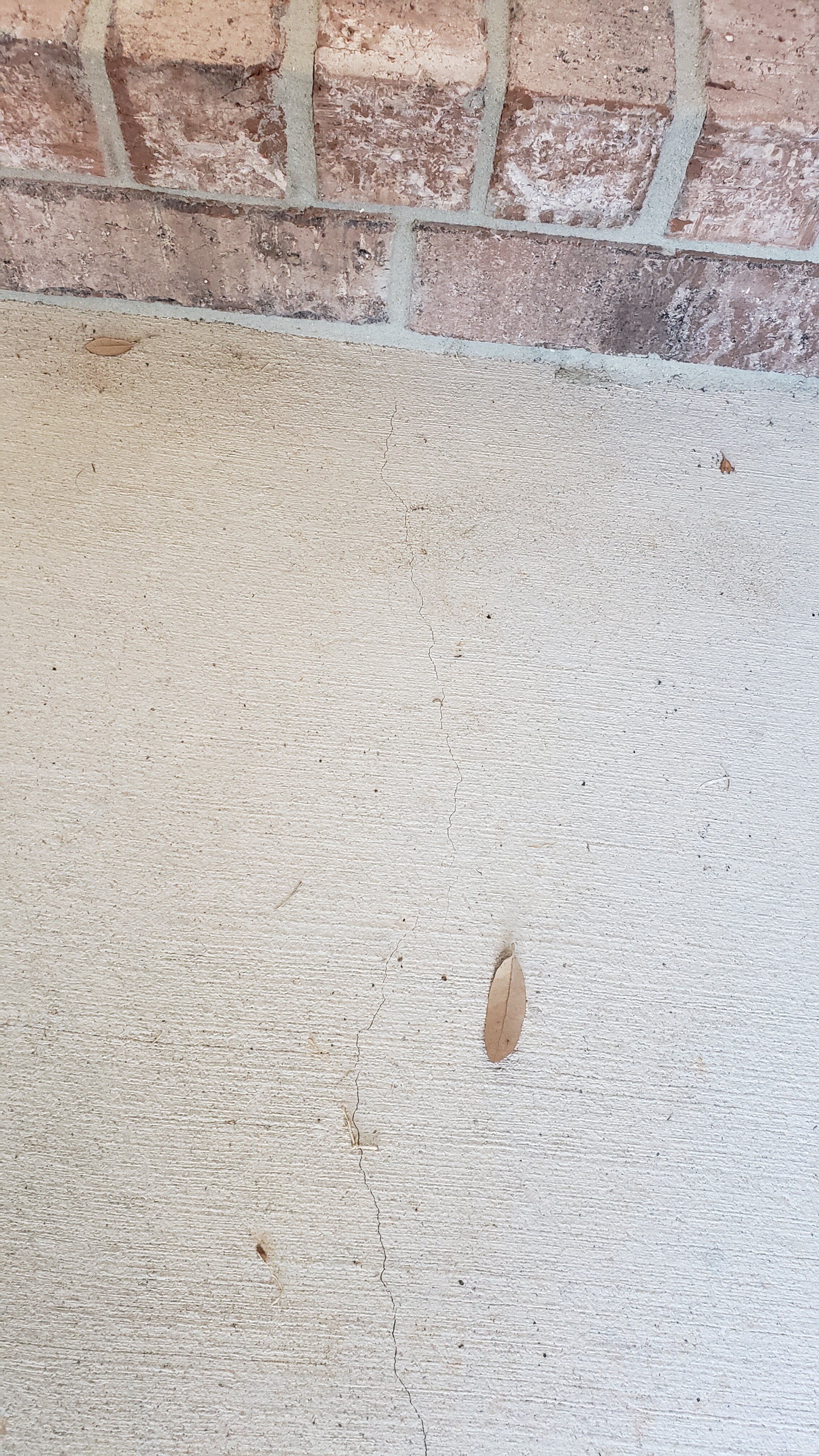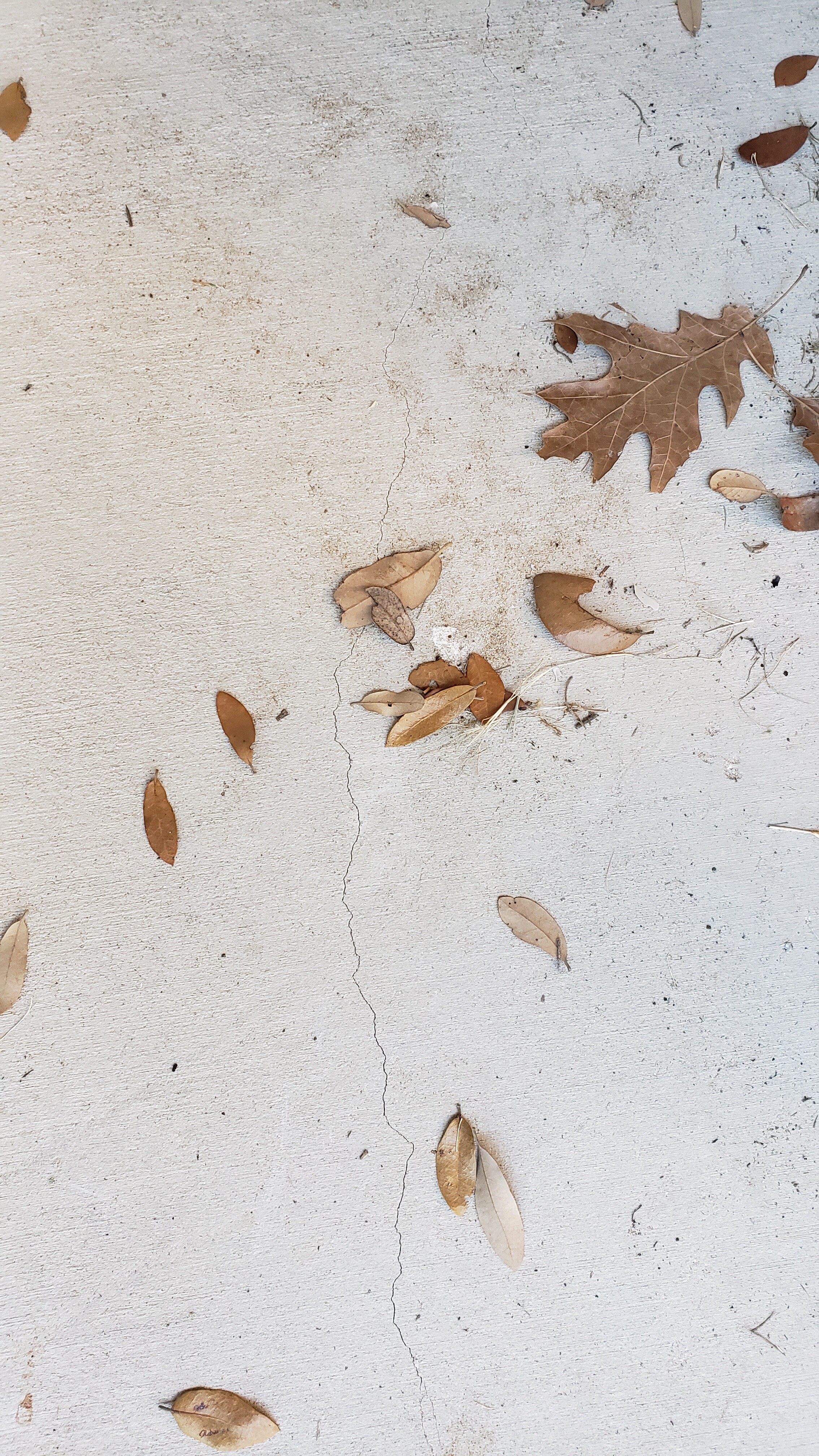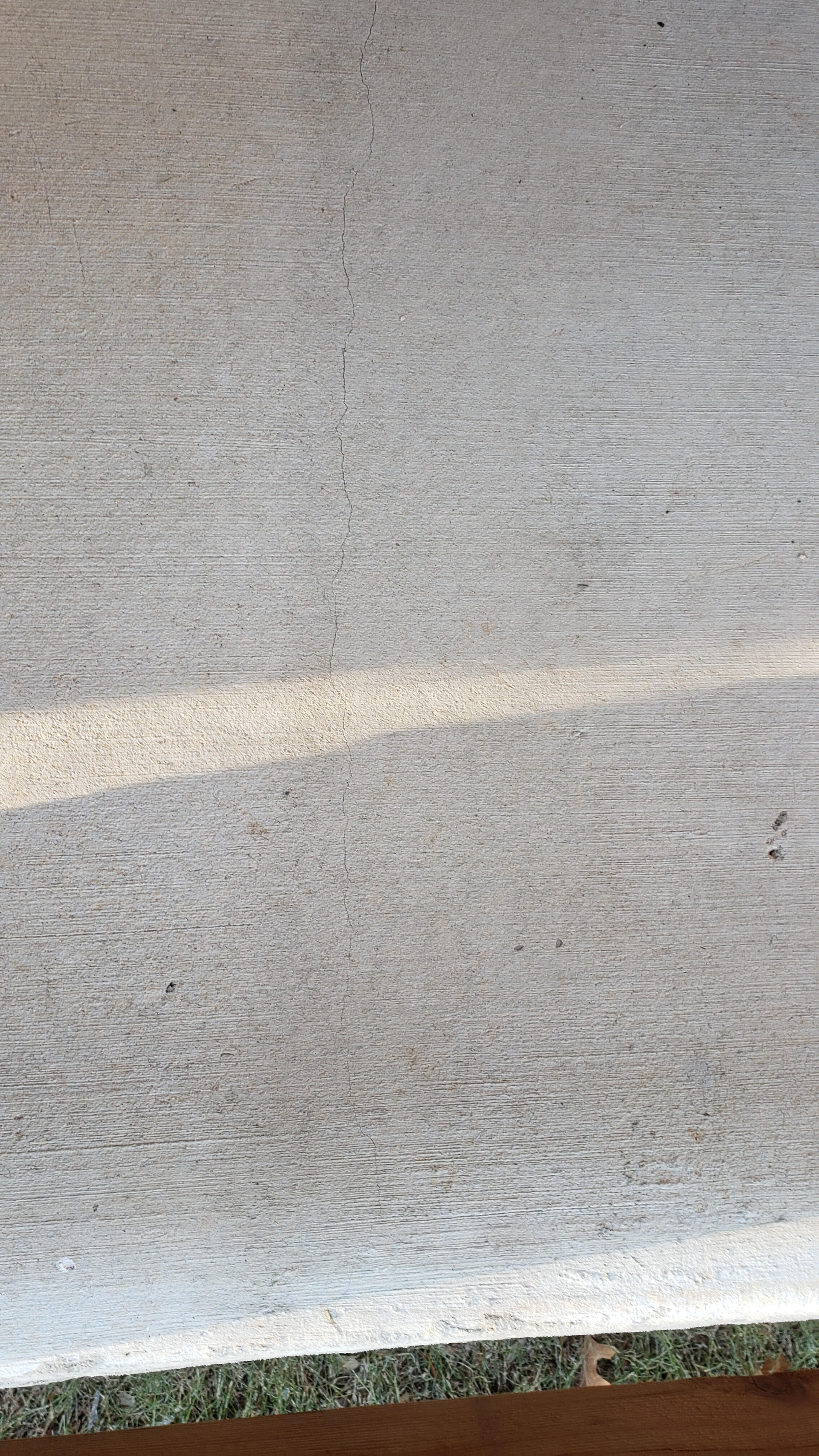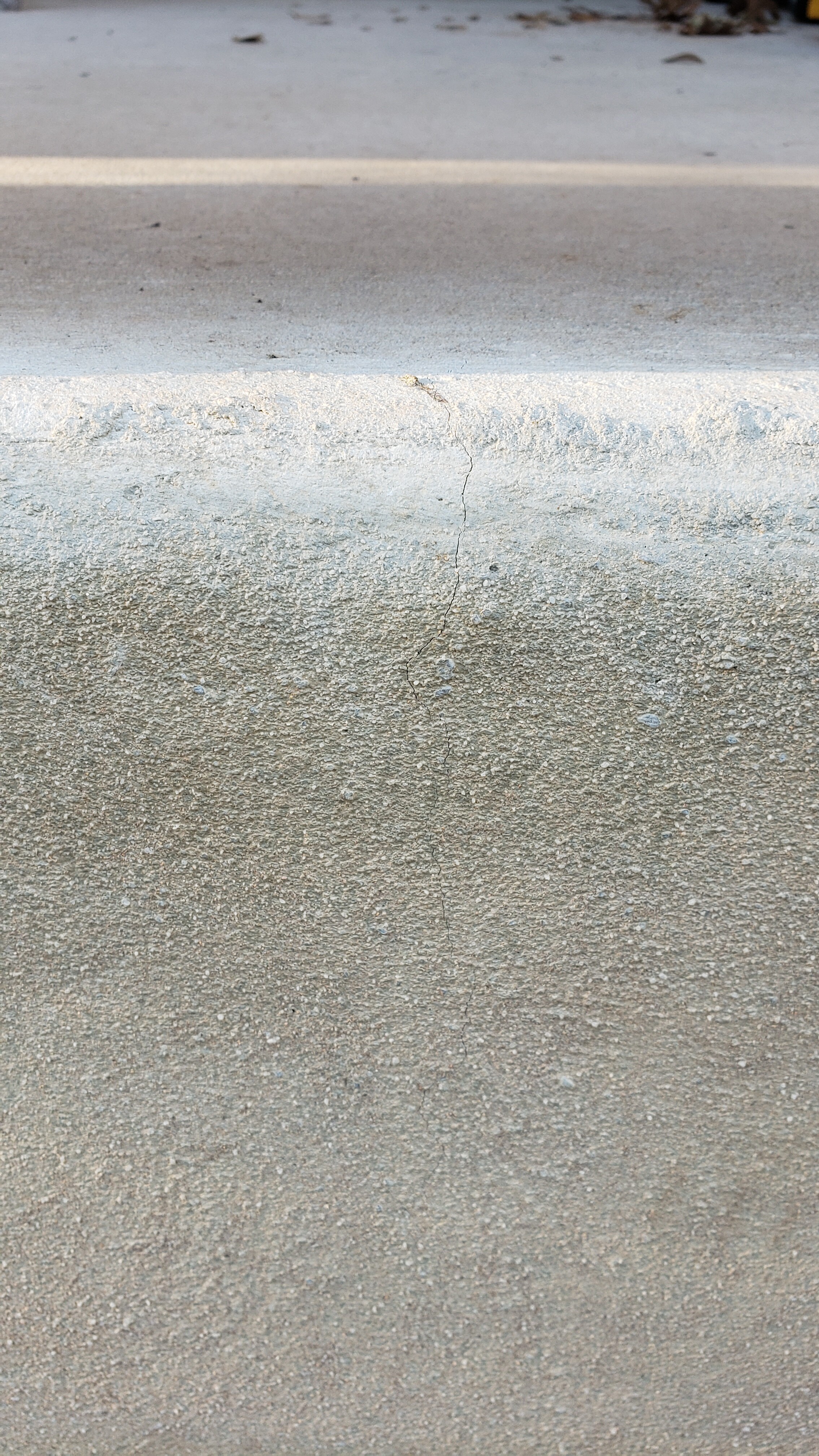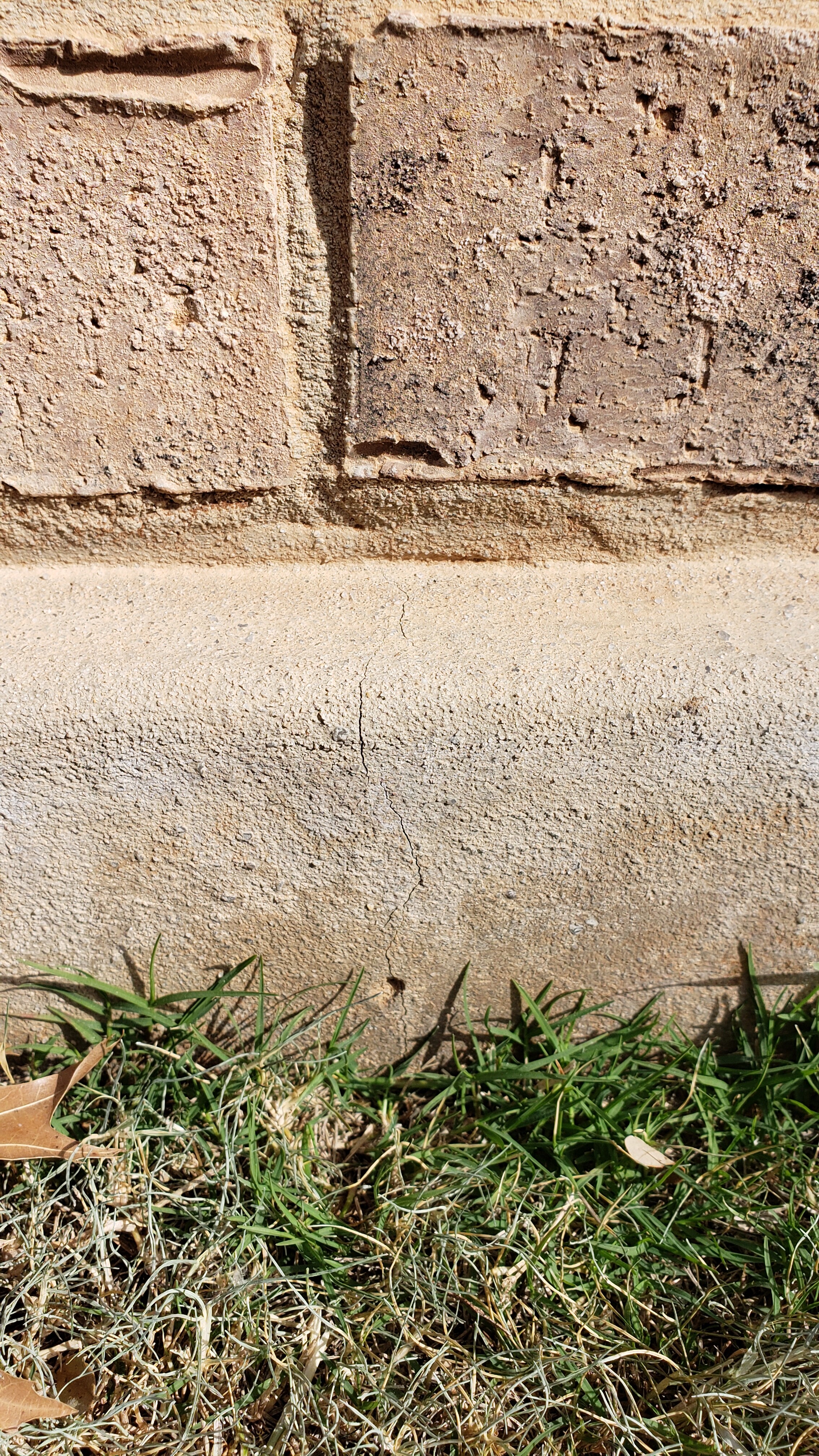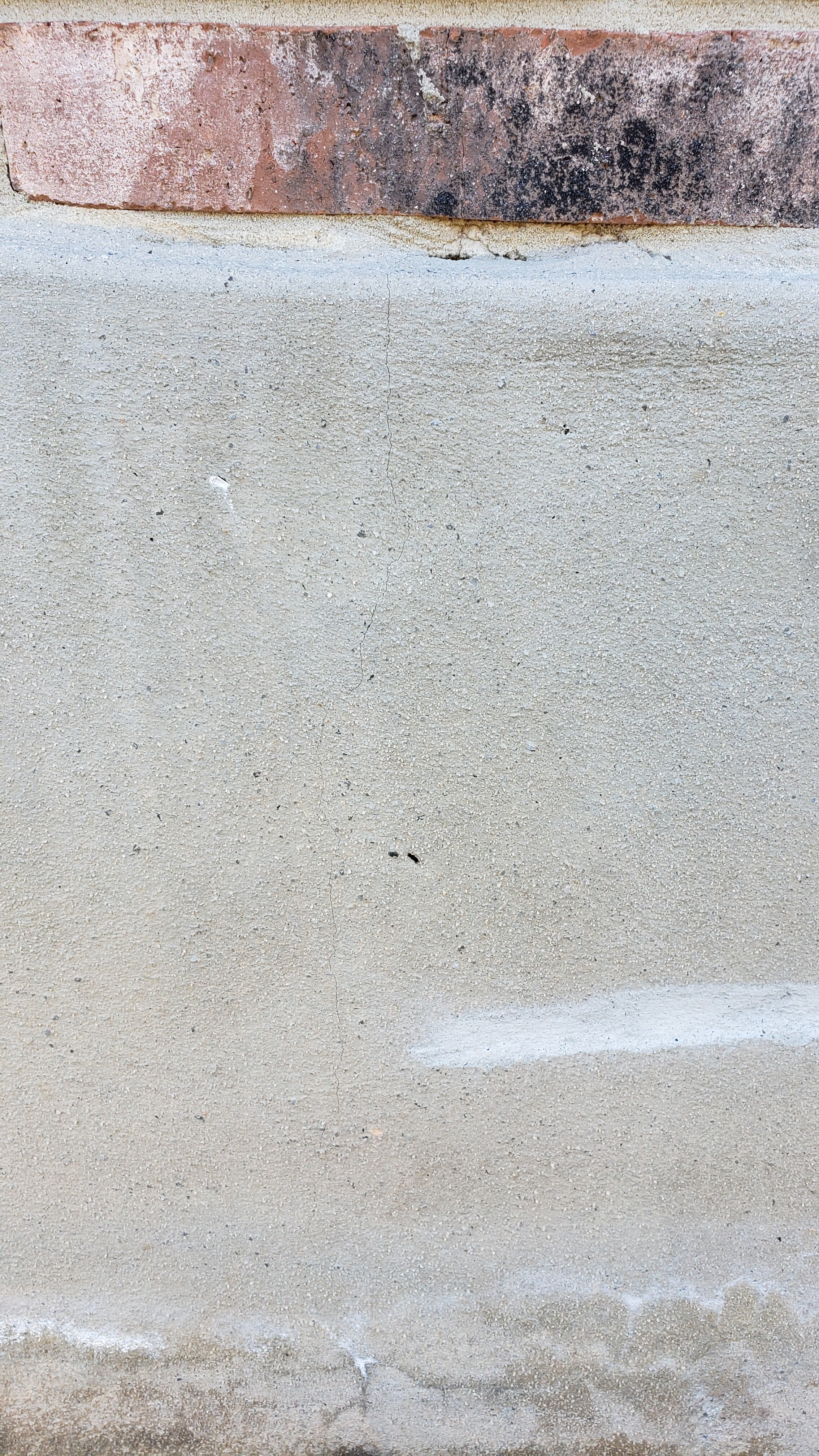Whereever the foundation supporting soil dries out the least or stays wet the most
is where the pressure upwards is the greatest. Ergo center of slab or middle of exterior perimeter (as you describe) are the typical tension spots that exhibit concrete's weakness (its strength is compression).
Even during concrete curing when new, such cracks may exhibit & thus called "temperature cracks"/other.
These photos depict SOP cracks in all of Aggieland & also in highly volatile clay supporting soils areas.
You may have 10 years to watch, then do something about it if they open up, expose tensile-resisting steel to rust/failure = suing builder with structural engineer report in hand.
Such drama happens once in a blue moon, even in Aggieland and .... after expenses, you'll not have enough to completely pay for a jack-em-up, temporary (2-forever years) fix.
These photos strongly suggest you are good to go, no legal in your near future.
I understand not many can afford a structural engineer foundation design/plan/inspections when building new and so we roll the dice ala most spec.house builders must do to compete in biz. Those that do have a sounding board for such concerns/monitoring and even (if come cases) free consultation/inspections for a fix/solution of failures (usually caused by invading water & not engineering faults).
Seems I went over my ten-words-or-less New Year's resolution ... again. (Sigh)
Ten words or less ... a goal unattainable
